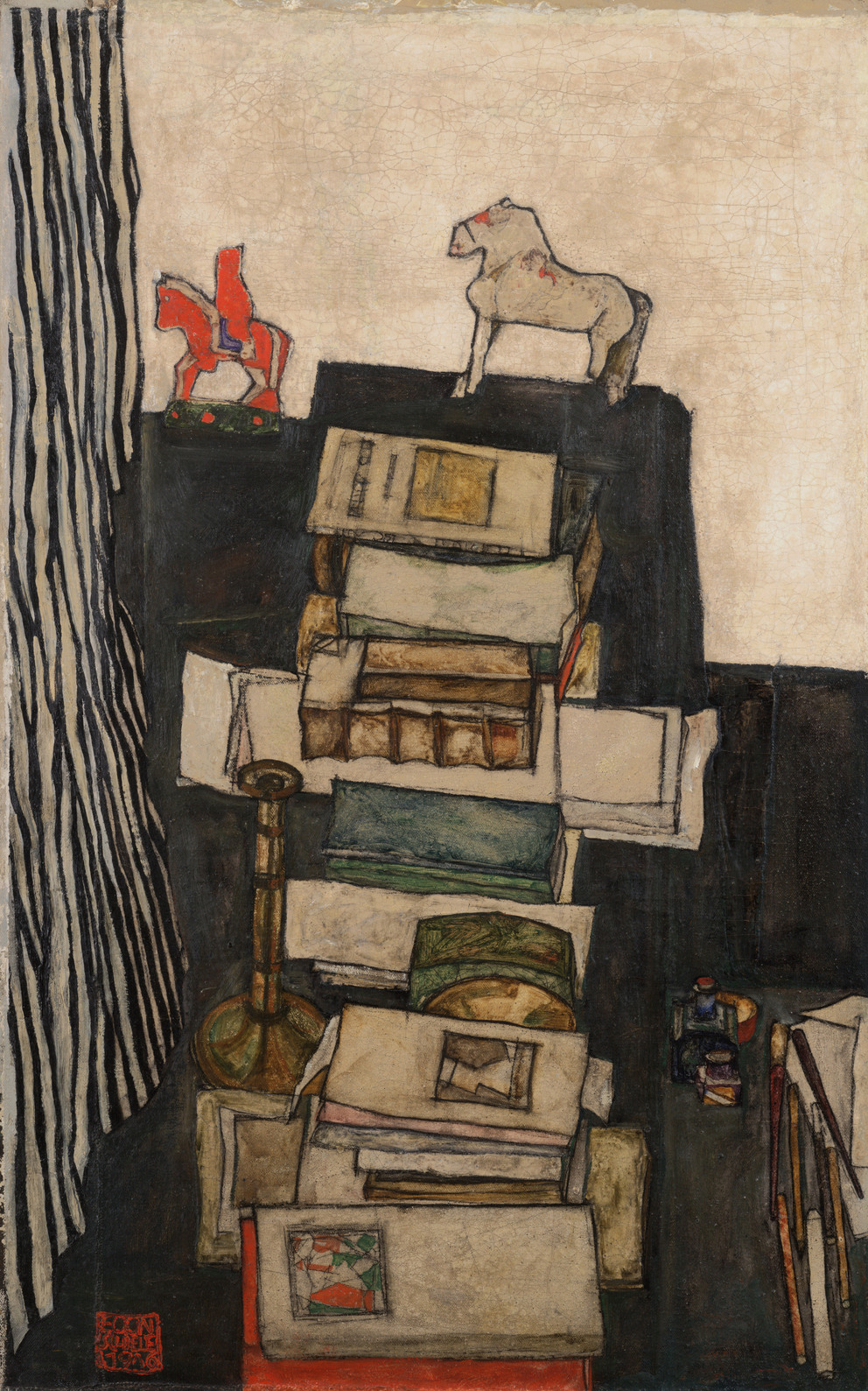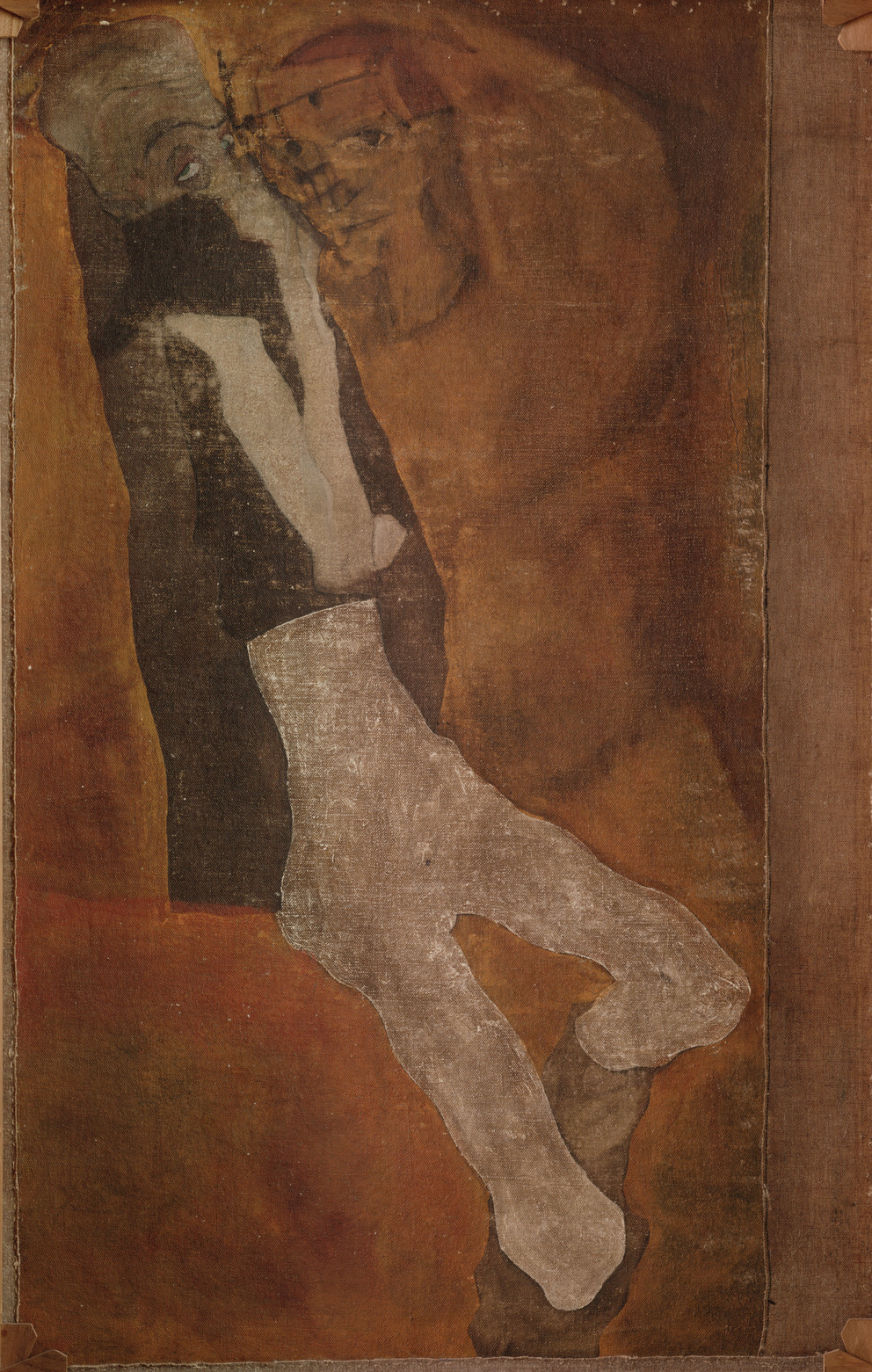As a still life, the depiction of his desk represents a rarity in Egon Schiele’s (1890–1918) oeuvre. Stylistic reasons suggest that the artist began creating the work in 1914, but according to the dating in red, however, he continued to work on it until 1916. He tilts the desk into the picture plane so that the books appear to be piling up vertically. Next to the books we can see further utensils, including a brass candlestick, an ink well, pens and a blotting paper holder. The crowning glory of this alternative self-portrait are two wooden horses from Schiele’s folk art collection,
Toyhorse being in the Leopold Museum’s collection. The curtain along the left edge of the picture, whose striped pattern resumes the rhythm of light and dark on the desk, can be rediscovered as a garment of Schiele’s wife, for instance in
Edith Schiele in a Striped Dress, Seated dating from 1915.
The medium on which this painting was created is unusual: Schiele used two pieces of canvas, sown together. The bigger piece had already been used for a painting. Since Schiele painted on the reverse, the early work
Semi-Nude Youth (Self-Portrait) was preserved. Because of the partial use of metallic colors, the work is believed to have been created in late 1909. In
Nude Boy with Gray Shirt (Self-Portrait), a corresponding drawing has also been preserved. Contemporary descriptions suggest that the painting on canvas may have been the work that Schiele exhibited under the title
“The Ailing Man” in December 1909 at the first exhibition of the Neukunstgruppe at Kunstsalon Pisko in Vienna, an artists’ association which he had co-founded shortly before. It is unclear, however, why he chose to discard the early work in favor of a still life of his desk, but such decisions were not uncommon in Schiele’s artistic process.
VG, 2022







